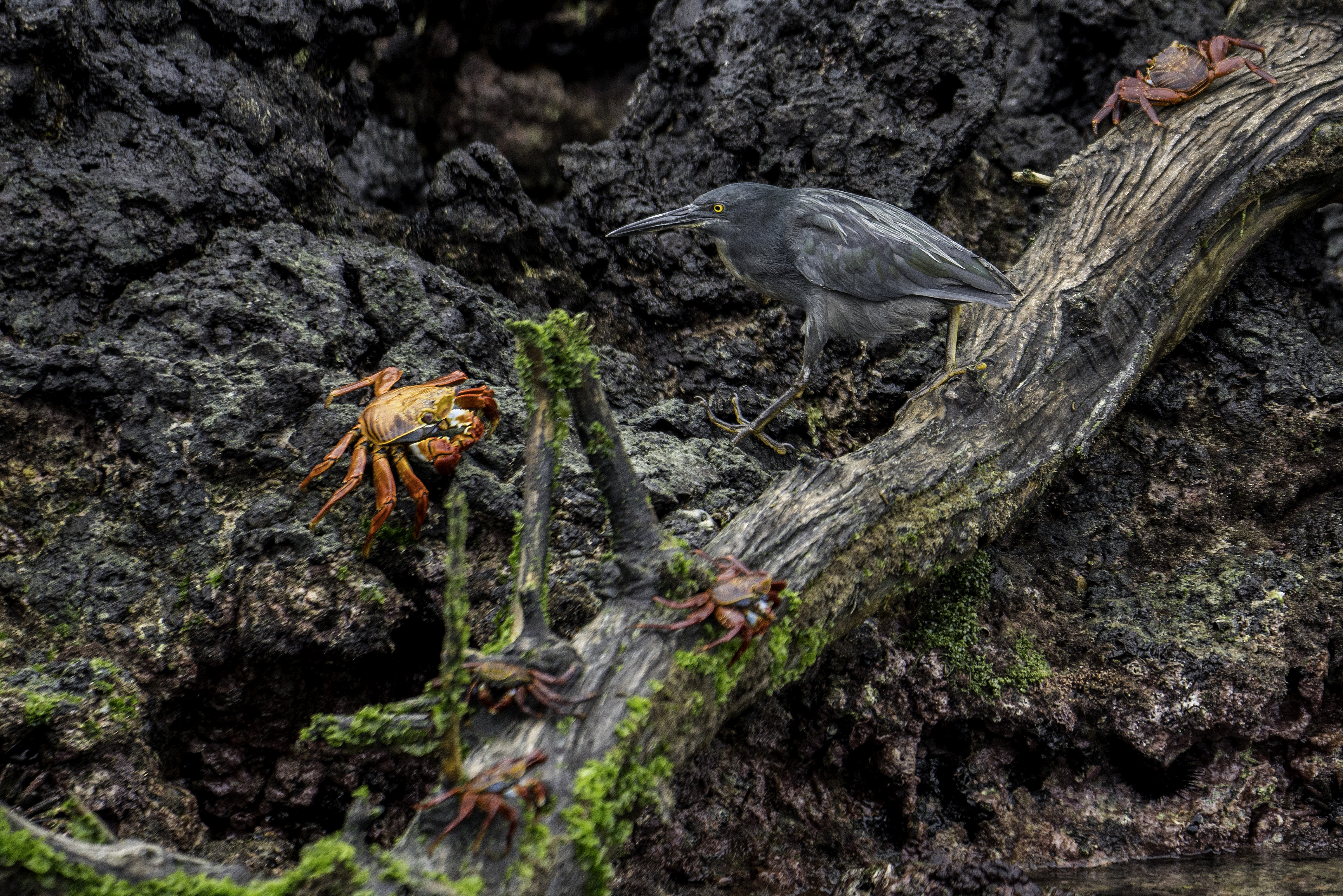Lava Heron (Butorides sundevalli) Galapagos2.jpg on:
[Wikipedia]
[Google]
[Amazon]
The lava heron (''Butorides sundevalli''), also known as the Galápagos heron, is a

species
In biology, a species is the basic unit of classification and a taxonomic rank of an organism, as well as a unit of biodiversity. A species is often defined as the largest group of organisms in which any two individuals of the appropriate s ...
of heron endemic
Endemism is the state of a species being found in a single defined geographic location, such as an island, state, nation, country or other defined zone; organisms that are indigenous to a place are not endemic to it if they are also found else ...
to the Galápagos Islands
The Galápagos Islands (Spanish: , , ) are an archipelago of volcanic islands. They are distributed on each side of the equator in the Pacific Ocean, surrounding the centre of the Western Hemisphere, and are part of the Republic of Ecuador ...
of Ecuador
Ecuador ( ; ; Quechua: ''Ikwayur''; Shuar: ''Ecuador'' or ''Ekuatur''), officially the Republic of Ecuador ( es, República del Ecuador, which literally translates as "Republic of the Equator"; Quechua: ''Ikwadur Ripuwlika''; Shuar: ' ...
. It is considered by some authorities — including the American Ornithological Society
The American Ornithological Society (AOS) is an ornithological organization based in the United States. The society was formed in October 2016 by the merger of the American Ornithologists' Union (AOU) and the Cooper Ornithological Society. Its m ...
and BirdLife International — to be a subspecies (or even just a colour morph) of the striated heron
The striated heron (''Butorides striata'') also known as mangrove heron, little green heron or green-backed heron, is a small heron, about 44 cm tall. Striated herons are mostly sedentary and noted for some interesting behavioral traits. The ...
(''B. striata''), and was formerly " lumped" with this species and the green heron (''B. virescens'') as the green-backed heron "Green-backed heron" is a collective term for certain herons. Small and compact among herons, these birds often feature green plumage – rare among the Ardeidae –, in particular on the back, wings and scapulars.
They were formerly believ ...
.
Description
The adult is slate-grey to black, which allows it to blend in with the hardenedlava
Lava is molten or partially molten rock (magma) that has been expelled from the interior of a terrestrial planet (such as Earth) or a moon onto its surface. Lava may be erupted at a volcano or through a fracture in the crust, on land or un ...
. The back feathers typically have a silvery sheen and it has a short crest on its head. When breeding, the heron has a black beak and bright orange legs, but these fade to grey after the breeding season.
Distribution and habitat
These highly territorial birds are found in intertidal zones and mangrove swamps on all of the islands ofGalápagos Province
Galápagos () is a province of Ecuador in the country's Insular region, located approximately off the western coast of the mainland. The capital is Puerto Baquerizo Moreno.
The province administers the Galápagos Islands, a group of tiny vol ...
.
Behavior

Diet
The lava heron stalks small crabs and fish slowly before quickly spearing and eating them. They have also been known to eat the flies that gather near cacti and occasionally smaller birds.Interactions
These birds have little fear of humans. It has been noted they have flight behaviors, some of which may carry the purpose of territory defense/advertising.Calls
Lava herons are typically seen hunched over and they have a sharp alarm call (described as a ''scow'' sound). During aggressive behavior they will use a ''skuk-skuk'' call.Breeding
Unlike most herons, these birds nest in solitary pairs for one breeding season in either the lower branches of mangrove trees or under lava rocks. They can breed year-round, though typically from September to March, and can mate up to three times a year and have up to ten eggs each time.References
Resources *Heinzel, Hermann and Barnaby Hall. Galapagos Diary. Los Angeles; University of California Press, 2000. {{Taxonbar, from=Q603374 lava heron Endemic birds of the Galápagos Islands Galápagos Islands coastal fauna lava heron